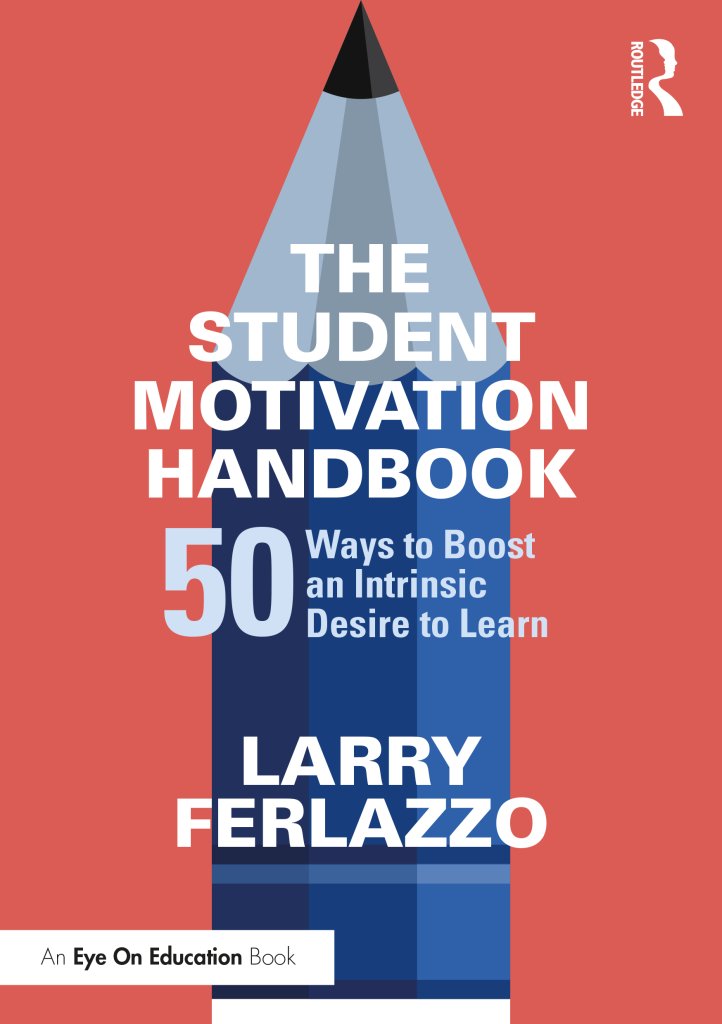How to Promote the Intrinsic Desire to Learn
Rather than relying on grades as external motivators, teachers can help students develop intrinsic motivation by providing opportunities for autonomy and building their sense of competence.
Your content has been saved!
Go to My Saved Content.A case can be made, and researchers have made it, that motivation is one of the keystones of teaching and learning (Dorn et al., 2017).
As an educator, based on my life and professional experience, I may have a fairly solid idea of what I believe students might need to know in order to be successful academically and professionally. However, how much does that matter if my students are not motivated to learn what I am teaching?
Of course, I can try to entice their interest through “dangling carrots” like grades, points, prizes, gold stars, etc, (or threatening “sticks” like detention or negative calls home). This kind of “extrinsic motivation” can work, but usually only for the short term and typically for tasks that don’t require much higher-order thinking (“Daniel Pink on Incentives and the Two Types of Motivation,” n.d.).
On the other hand, “intrinsic motivation” describes a situation where the energy to act comes more from inside the learner. In other words, the reward is the activity itself. The late educator Ken Robinson talked (Ferlazzo, 2012) about how farmers can’t force their crops to grow, but they can create the conditions that support their seeds' ability to grow—providing the right soil, water, and care. This description is similar to the challenge teachers face with encouraging student intrinsic motivation—we can’t make them have it, but we can create the classroom conditions where that kind of motivation is more likely to develop and flourish.
Extensive research documents the benefits of intrinsic motivation over the extrinsic kind. Intrinsic motivation tends to lead to greater academic achievement and a better sense of well-being (Burton et al., 2006) lasts longer, enhances creativity, and cultivates higher-order thinking (Brewster & Fager, 2000).
Extrinsic motivation tends to reduce long-term interest and effort in the topic at hand (Deci et al., 1999; Kohn, 2018; Wehe et al., 2015) and reduce creativity, as well (Hennessey, 2000). Research has found that motivation driven by extrinsic factors tends to lead to “decreased well-being” (Howard et al., 2021). Experiments using student rewards to improve academic achievement have failed repeatedly (Adams, 2014; Dietrichson et al., 2020; Ferlazzo, 2016). If and when incentives have resulted in very limited short-term “success,” researchers have found they tend to increase participants’ focus on the reward itself, not on the task. Work quality then suffers, and task interest tends to decline to previous levels—or below them—after the reward is given (Kohn, 2016).
Students, especially teens, in the United States report exceptionally high feelings of disengagement from school (Sparks, 2020; Yale University, 2020)—and that was before the COVID pandemic. It does not seem to be a stretch to consider that the high levels of extrinsic motivation present in most classes and schools might contribute to these strong negative perspectives.

Emphasizing intrinsic motivation also makes me feel better about myself as a teacher and, I believe, also contributes towards creating an overall class atmosphere of a “community of learners” instead of a “classroom of students.” No one wants to be treated like a rat in a maze, and I certainly don’t want to view myself as a teacher who even vaguely can be described as promoting that kind of system.
Does that mean I never use extrinsic motivation in my classroom? Of course not. I was a community organizer for nineteen years prior to becoming a secondary teacher twenty years ago. Organizers talk about working “in the world as it is” and not in “the world as we’d like it to be.” Creating the conditions to encourage student intrinsic motivation can sometimes be hard and time-consuming. It’s not at all unusual for me to offer extra credit, grade by using points, and offer healthy snacks as game prizes, and I am definitely not above sometimes “threatening” negative consequences for inappropriate behaviors. I am not a Pollyanna with my head up in the clouds, and live “in the world as it is.” However, often (though not always) when I apply “carrots,” I also briefly talk with students about how it is more of an exception to the “rule.” The “rule” is that I hope students generally do things in our class because they want to, and not because they feel a need to pursue rewards.
When it comes to using “sticks,” I try to follow the advice (with a slight adjustment) of Dr. Edward Deci, perhaps the preeminent researcher in the world on intrinsic motivation. He acknowledges that a negative consequence might have to be used, but then “you need to sit down the next afternoon when everyone’s calm, talk it through from both sides, then discuss ways so the behavior doesn’t happen again.... Always use the blow-up as a learning moment the next day” (Feiler, 2013, para. 18).
My modification to his advice comes from my community organizing experience, where we learned that “polarization” can happen, but that “depolarization” can be most effective if it happens fairly quickly. In that spirit, I try to make that follow-up conversation happen during the same class or track the student down later in the day.
It is also important to keep in mind that students—and the rest of us—can be motivated by both a desire to learn what is being taught and wanting a good grade, just as an interest in being a better teacher motivated me to write this book, as well as the possible additional income I could gain from royalties.
Let’s also recognize the role of what writer Daniel Pink calls “baseline rewards” (“Daniel Pink on Incentives and the Two Types of Motivation,” n.d.) and that is also supported by other research (Ferlazzo, 2015; Kaplan, 2015). The “baseline rewards” concept suggests that basic extrinsic “rewards” in a classroom (a caring teacher, engaging lessons, predictable and fair grading, cleanliness, respectful rules and atmosphere, etc.) or in a job situation (reasonable salary, safe working conditions) must be present for people to have any sort of motivation at all.
Absent those kinds of “baseline rewards” and participants will tend to focus on the inequitable and unfair situation rather than on learning or on being productive.
But even though I recognize the role of extrinsic motivation in the lives of my students and in my life, I am also constantly striving in my classroom to create “the world as I’d like it to be” by creating the conditions where intrinsic motivation can blossom. This book shares what teachers can do to make that world happen more often in our classes.
For effective educators, there is always tension between “the world as it is” and “the world as we’d like it to be.” If we always operate out of the former, we can become transactional pragmatists always settling for what appears to be the easiest short-term solution. If we always operate out of the latter, we can become hopeless sentimentalists who are likely to become disillusioned and burnt-out. But it’s not a question of either/or and, instead, it’s more of one considering which side do you tend to operate on, and if you tend to use the former to lead you to more of the latter. I would suggest that favoring that side of the coin is the perspective that is more likely to keep you—and your students—in a content and effective learning situation.
Researchers have identified four general areas that can contribute towards creating the conditions where intrinsic motivation can be supported (Center on Education Policy, 2012; Ryan & Deci, 2000), and they serve as the basis for the next four chapters in this book:
- Autonomy: having a degree of control over what needs to happen and how it can be done
- Competence: feeling that one has the ability to be successful in doing it
- Relatedness: doing the activity helps the student feel more connected to others, and feel cared about by people whom they respect
- Relevance: the work must be seen by students as interesting and valuable to them, and useful to their present lives and/or hopes and dreams for the future
Not everything we do in the classroom has to involve all four of these elements, but I do think we can include some of them in most of our lessons. There will be times, however, that students are required to do tasks that make it challenging to include even one of them (for example, taking state standardized tests). In those cases, I believe it’s a safe guess that students are likely to be more engaged in them if their teachers have emphasized the conditions for intrinsic motivation most of the rest of the time.
Excerpt from The Student Motivation Handbook: 50 Ways to Boost an Intrinsic Desire to Learn by Larry Ferlazzo, © 2023 Routledge/Taylor & Francis, Used with permission.
